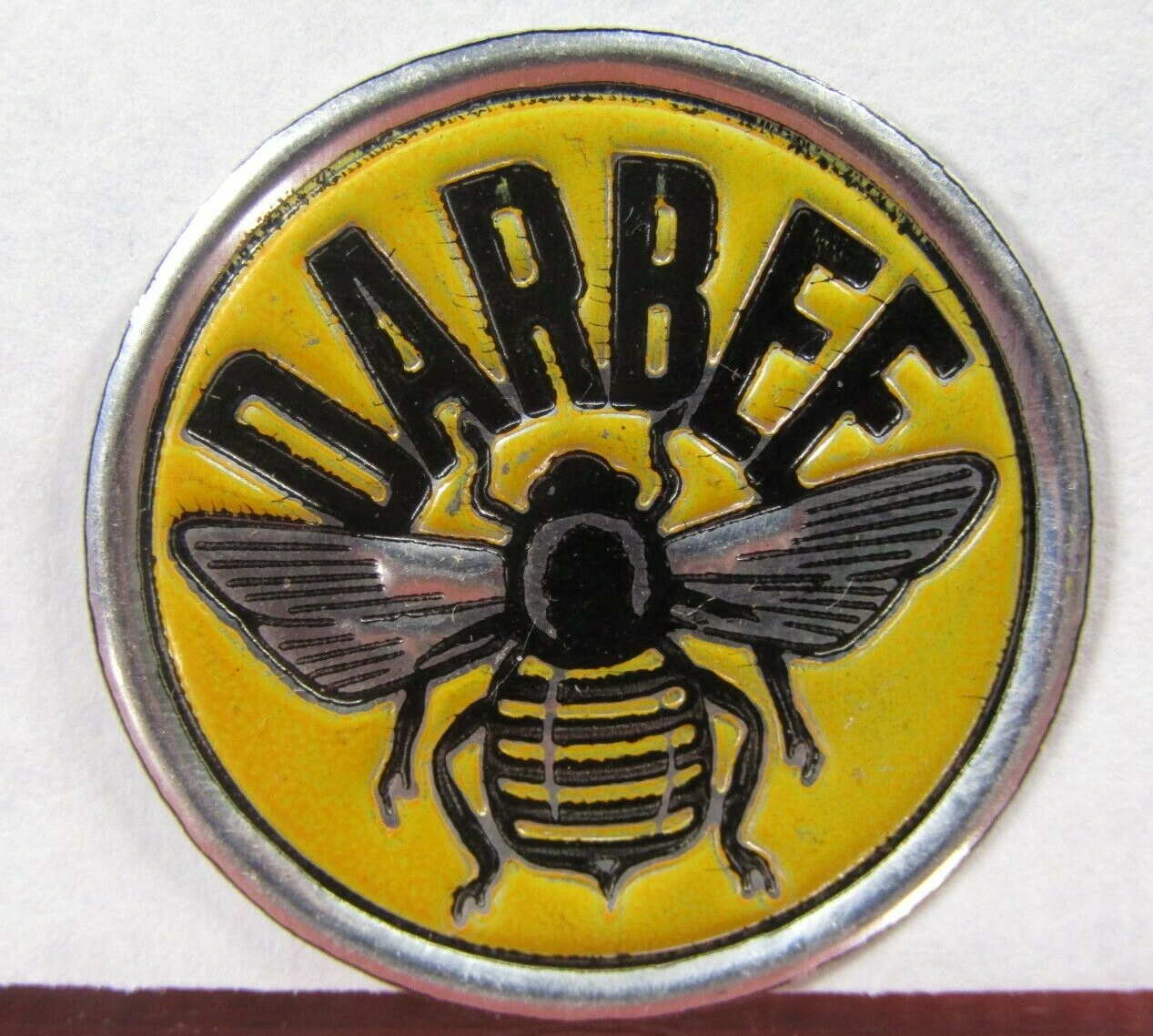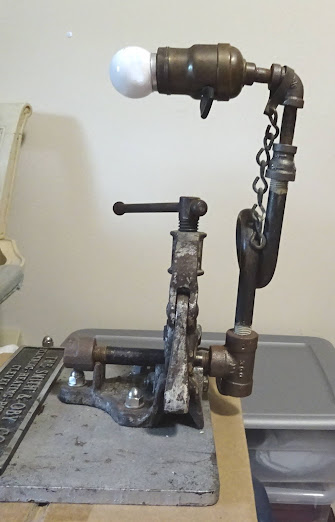Another Mystery Object identification quiz has come and gone.
There were six objects pictured, and all were correctly identified except for #1, the Bee item.
Pipistrello was the “winner” with four correct identifications, followed closely by Tundra Bunny (three-and-a-half correct) and Mariette and Rosemary, each with three correct answers.
Congratulations to all the successful entrants, and to all those who wrote in with such interesting answers. Often even the incorrect answers provide a lot of illumination on the objects, highlighting their history and related forms.
Here are the answers to the 2024 mystery objects:
#1 Scatter Tag for Coal Delivery Service
This was the object that caused the greatest confusion, and which no one guessed correctly. I imagine the problem was the bee decoration, which led to thoughts of bees and honey, whereas the only bee connection was with the Darbee coal company name. The Darbee brand was apparently used by Sigmon Coal in Coalgood (also known as Mary Helen), in Harlan County, Kentucky.
Years ago, many houses had coal-burning furnaces, and had their coal delivered to a coal bin in the basement. There was often considerable competition among the coal companies, and they would throw in a handful of scatter tags with each delivery to remind customers where to re-order.
These scatter tags, like the Darbee one, were colorful and easy to spot, and being made of foil or cardboard, would burn up readily with the coal.
There are innumerable varieties of scatter tags, made in many shapes, and they have been a popular collectible for years. It seems that most of those that survived were from unused supplies, as any plucked from the coal pile would likely be dented and covered with black coal dust, although I am sure that did not deter some juvenile collectors.
This colorful Red Clover Coal tag added a touch of elegance as well as color.
This cardboard one from the Green River Fuel Company looks exactly like a milk bottle cap (I’ll bet a lot of scatter tags were made with the same card stock and machinery). The fact that it is from Mogg, Kentucky, a ghost town, makes it extra appealing to me.
Here is an advertising blotter from 1940 that lets you imagine these tags sprinkled among the black lumps of coal.
I spoke too soon. Looking through my files, I found this Grenadier tag that has obviously spent some time with the coal. We see that “It Has Been Pine-O Processed. Note the Fragrance.” Although I’m sure that plain burning coal didn’t smell any too good, as one who hates all perfumes, that sounds like my worst nightmare.
#2 Retractable Champagne Stirrer or Swizzle Stick
This was correctly identified by Mariette, Tundra Bunny, Pipistrello, Rosemary, The Vintage Contessa and Jenny Woolf. Debra gets partial credit by identifying it as a whisk, but not specifying what for.
I should have guessed that this would be the most identified item, after that earlier post in which a number of readers thought that the baby holding a bunch of keys was getting into the liquor cabinet.
Back in the early 20th century, it was stylish to own one of these champagne stirrers. Despite many people appreciating champagne for its fizz, apparently some people did not like the bubbles, so stirring it would make it flat. On the other hand, swizzle sticks were also used to mix or froth up other types of mixed drinks, so you can take your pick, more bubbles or fewer.
Most of these were made in sterling silver or gold, and I imagine that they were honorific gifts bought at stores like Tiffany, Cartier, or Asprey’s “for the person who had everything.” Probably they were never much used, at least to take to a party, as using them would render them wet and probably sticky, and even after rinsing not desirable to put back in a case or pocket. For use at home there were non-retractable versions, although for home use the retractable ones would protect the delicate tines.
Here is the same stirrer in the closed position.
#3 Hay Knife
Mariette, Rosemary and Pipistrello all identified this item.
These large hay knives were common farm tools, used to cut apart bales of hay or straw. There are videos of them being used on Youtube.
#4 Rotary Telephone Dialer
Tundra Bunny and Rosemary both recognized this item.
Remember when dial telephones were everywhere? The dials would become dirty and possibly germ-laden. Moreover, many women wore white gloves which could become soiled by dialing a rotary telephone.
Enter the telephone dialer. These were very common items, many of them plastic advertising give-aways, but some made like fine jewelry. I thought more people would remember the scene in Breakfast at Tiffany’s, in which Audrey Hepburn and her boyfriend are shopping at Tiffany’s, but cannot afford anything there except a sterling telephone dialer.
Note the small lip at the bottom, which would engage the thin plate of the dial, to aid in dialing and to prevent slipping on long numbers like “9” or “0”.
#5 Nutmeg Grater
This item was completely and correctly identified by Mariette, The Vintage Contessa and Pipistrello. I decided to give partial credit to Tundra Bunny and Kirk, who could tell that it was a small grater used for spices and the like. But only the first three specified nutmeg, and nutmeg graters make up such a large class of collectibles that when I checked online, there were over twelve books specifically on collecting nutmeg graters. Some specialized in American examples, while others listed English ones, and some limited themselves to silver specimens.
Many nutmeg graters (especially those silver ones) closed completely with the nutmeg stored inside, so they could be kept in the pocket and carried around. This larger one looks like it was for use in a kitchen.
The working parts and similarity to other types of graters are apparent in this interior photo.
Or rather Rube-Goldberg-esque Lamp Sculpture.
This was a bonus item because obviously it is a kind of Frankenstein lamp made of cannibalized parts that originally had other uses. Still, Debra, Tundra Bunny and Pipistrello were able to see through the tricks and correctly identify it.
The Smith and Oby Company in Cleveland, as Tundra Bunny mentioned, is still in business. When I bought this, I called them up and they identified it as potentially the handiwork of their old employee Fred Schmidt, who was also a part-time sculptor.
They led me to his son, Jerry Schmidt, who is currently an artist in Cleveland who works on large-scale metal sculptures. His verdict: “I’ve seen him when I was little work with funky lights, sounds and tinkering with this type of stuff! I would probably say this was dad’s!”
Here is proof that the lamp still works. Don’t worry, I inspected the wiring and electrical connections before trying it!
Here are the side and back of the lamp, illustrating how it is put together.
Usually, I add some tiny print at the bottom stating that all objects and photos are “property of the author.” My sister is also an enthusiastic collector, and we now collect these mystery items together—in fact, it is hard to say where one collection stops and the other begins. So the phrase “author” definitely includes both of us.
I want to thank everyone who participated in this quiz. As before, the tabulation was complex, so if I made any errors, just point them out and I will fix them. If you have any observations or additional questions, please let me know in the comments.
All original objects and photos are property of the author.























